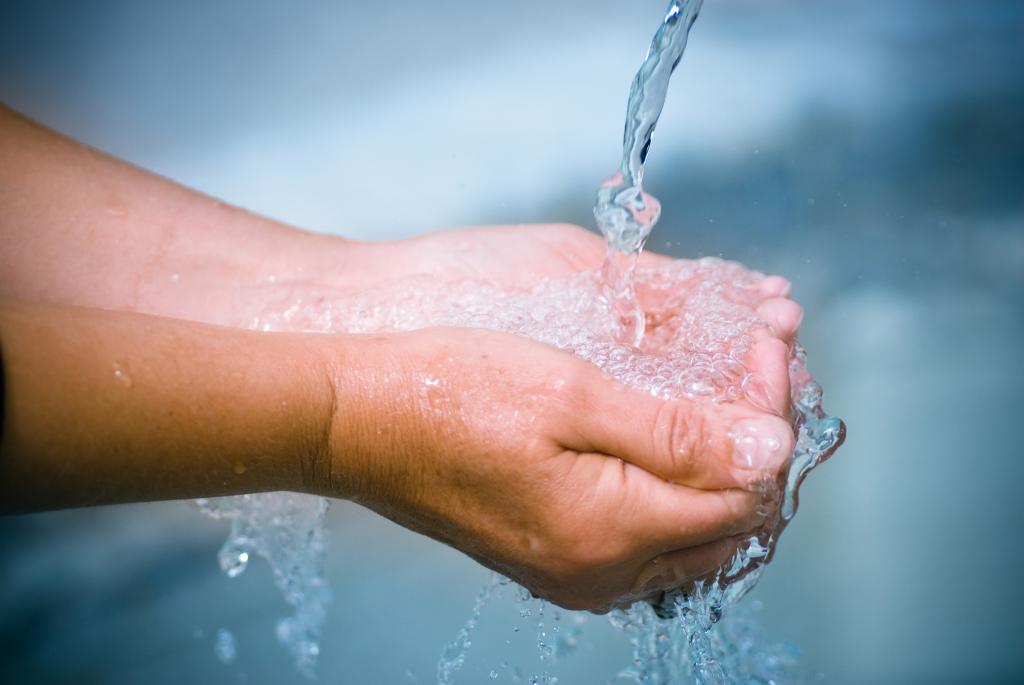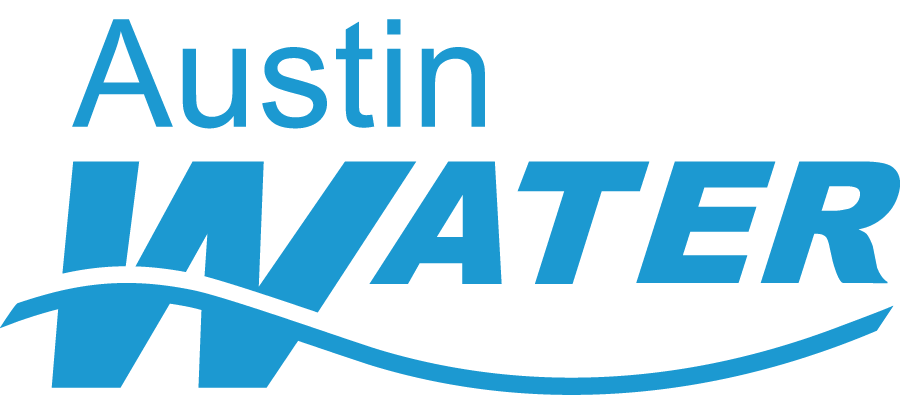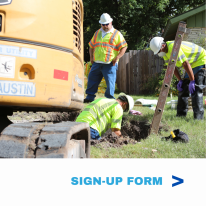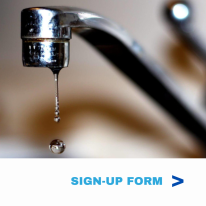How Austin Water is Keeping the Lead Out
Austin is very fortunate to have extremely low occurrences of lead in drinking water compared to other parts of the country. Our source waters (Lake Austin and Lake Travis) contain no lead, and there is no lead in our treated drinking water.
Austin Water is an industry leader and proactive environmental steward, adopting many successful practices to improve water quality well ahead of others. Austin Water consistently meets all state and federal drinking water standards and monitoring requirements for lead.
Since the 1920s, Austin Water has used a lime softening treatment process that produces noncorrosive and scale-forming water. This creates a protective scale on the inside of pipes that prevents materials such as lead and copper from leaching out and into the water.
Additionally, more than 30 years before federal bans went into effect, Austin instituted local rules prohibiting lead in plumbing. At the same time, Austin Water began replacing any existing lead service lines through normal maintenance activities and rehabilitation projects. When lead is occasionally detected in water from the tap, it is almost always due to contamination from private plumbing and fixtures.
- Austin Water's Action Plan
-
Austin Water has been proactively implementing many successful strategies to prevent lead exposure. This timeline provides a snapshot of Austin’s efforts to “Get the Lead Out.”
- 1954 - Austin banned the use of lead water service pipelines on the public side of our water distribution system.
- 1960s - Austin Water’s voluntary efforts were well underway to replace lead service lines through normal maintenance activity and rehabilitation projects.
- 1967 - Austin banned the use of lead piping in private side plumbing.
- 1980s - Austin Water began serving as a partner in the Clean Rivers Program as part of newly implemented water protections for the lakes and streams within our jurisdiction.
- 1986 - The federal government banned the use of leaded pipe and solder in new plumbing systems. Federal regulations have been continually refined, making the definition of “lead-free” materials even more conservative over time.
- 2016 - Austin Water began a comprehensive record review and material inventory of all public service water lines. Lines serving schools and licensed daycares were prioritized for investigation. No lead pipes were found.
- 2023 - Austin Water began a collaboration with the Texas Commission on Environmental Quality to promote voluntary lead testing in schools and childcare facilities around the central Texas area.
- 2024 – Austin Water completed field investigations of all water service lines. There are no lead service lines in the system. The complete inventory of all lines in Austin Water’s service area is available for the public to review using the new interactive web map below.
Map - Water Line Service Material Inventory
- 2025 – Austin Water will proactively begin replacing galvanized lines. You can find more information about the Galvanized Requiring Replacement program below.
- 1954 - Austin banned the use of lead water service pipelines on the public side of our water distribution system.
Get the Lead Out of Private Plumbing
Lead sources are often found in plumbing systems on the property owner’s side of the meter. Although a property owner may have lead piping, solder or fixtures, it does not necessarily mean they are exposed to lead. Austin Water’s lime softening process helps coat pipes and prevent corrosion that could leach lead into drinking water, even on the private side. However, it is a good strategy to identify and replace potential sources of lead on private property. Austin Water can provide free water testing resources, and a private plumber can provide guidance on the pipes in your home.
- Understanding Your Water Service Plumbing
-
While Austin Water is taking proactive steps to identify and replace potential sources of lead in the public water distribution system, property owners are responsible for the pipes inside the building and along their property out to the water meter.
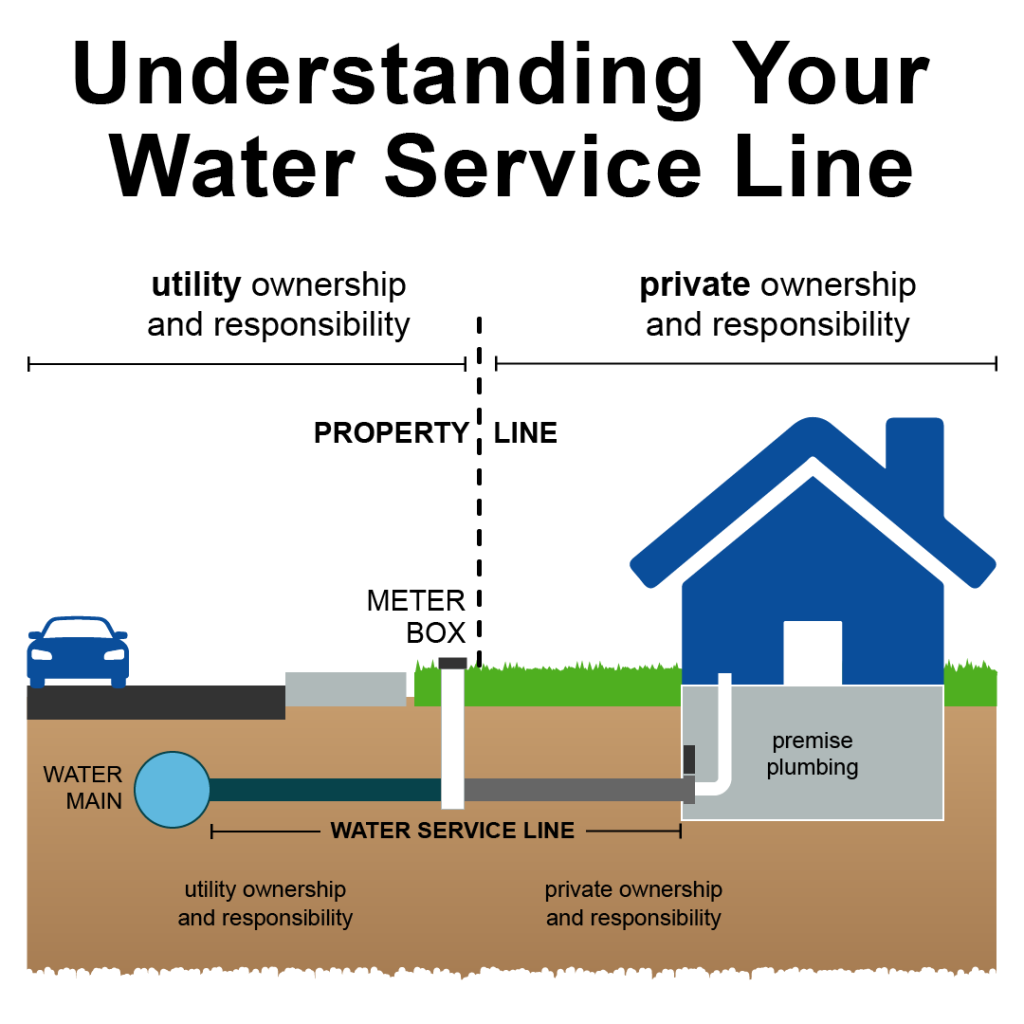
- Learn more about Sources of Lead
-
If there is no lead in Austin’s source waters, no lead in our treated drinking water, and no lead service lines in our distribution system, where else could lead come from? Lead can enter water from corroding pipes and other plumbing materials that contain lead anywhere up to the tap. While our water chemistry provides some protection against such corrosion, there are other environmental factors at play.
Common sources of lead in drinking water include lead pipes, solder, and brass plumbing components like faucets, fixtures and pipe fittings. In Austin, lead pipes are less common than many other major cities across the United States because Austin stopped allowing lead pipe in private construction in 1967. Galvanized iron or steel pipes that were previously downstream of lead pipe, known as “GRR”, may have adsorbed lead and present an increased risk of lead exposure. Homes built before 1986, when federal rules began requiring the use of “lead free” pipes and solder in water systems and facility plumbing, have long been considered most at risk. Fittings and fixtures were not included in these rules until 1996, with the most recent revisions to “lead free” being applied as late as 2014.
Your property’s build date can be found at your county’s property tax assessor. For information about properties in Travis County, visit the Travis Central Appraisal District website.
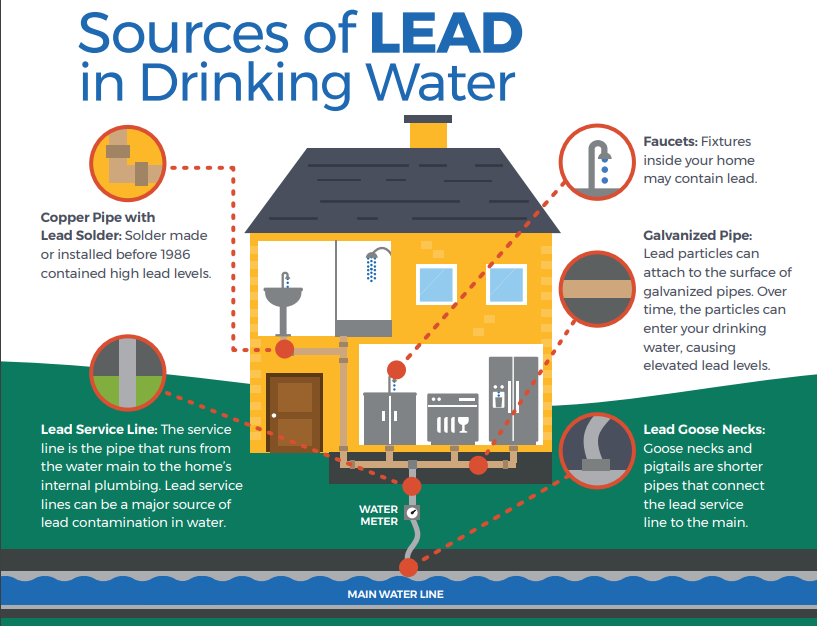
- Reducing Lead Risk Exposure
-
Austin Water is proactively mitigating potential lead sources in the public water distribution system. If you are concerned about possible risk of lead exposure, consider taking the following measures.
- Run your water. Flushing your plumbing after hours without use – such as first thing in the morning, after work, or upon return from vacation – is a good practice to improve water quality in your home regardless of lead issues. Home plumbing and service line structures vary, but generally you can let the water run for two to five minutes from every cold-water tap used for drinking or cooking. This brings fresh water from the main into your home. Showering, washing clothes, flushing the toilet, and running the dishwasher are all effective ways to flush pipes while conserving water.
- Only use cold water for drinking or cooking. Heat can cause more lead (if present) to be released from plumbing materials. Boiling water does not remove lead from water.
- Remove and clean faucet aerators often. Sediment and lead particles can be trapped by the screen on the end of faucets. Regularly remove and clean these.
- Use and properly maintain filters. Ensure any filters you choose are certified to remove lead according to NSF/ANSI standard 53. For particulate reduction, look for NSF/ANSI Standard 42. Check out the EPA's consumer tool for identifying lead-reducing filters. Always read and follow all directions provided with the filter. Using the cartridge after it has expired can make it less effective at removing lead. Never run hot water through the filter.
- Find and replace lead sources. Austin stopped allowing lead pipe in private construction in 1967. Per the EPA, among homes without lead service lines, the most common problems are with brass or chrome-plated brass faucets and plumbing with lead solder. New plumbing products should be certified “lead-free” by compliance with Standard NSF/ANSI 61 and/or 372. Check out the EPA’s guide to identifying lead free certification marks. A licensed plumber can also help you understand your premise plumbing.
- Have your water tested. If you think your plumbing and fixtures may contain lead, testing can identify whether lead has leached into your water. Sign up online to request a free water test kit or call us at 512-972-2133.
- Run your water. Flushing your plumbing after hours without use – such as first thing in the morning, after work, or upon return from vacation – is a good practice to improve water quality in your home regardless of lead issues. Home plumbing and service line structures vary, but generally you can let the water run for two to five minutes from every cold-water tap used for drinking or cooking. This brings fresh water from the main into your home. Showering, washing clothes, flushing the toilet, and running the dishwasher are all effective ways to flush pipes while conserving water.
- Replacing Service Lines Identified as Galvanized Requiring Replacement
-
Austin Water has no lead water service lines in its inventory. However, a small number of service lines have been identified as “galvanized requiring replacement” (GRR) because they have galvanized iron or steel pipe between the meter and the building, and the history of this line is unclear. These galvanized pipes could have adsorbed lead if they were ever downstream of lead pipe.
Austin Water aims to replace all GRR lines since they may present increased risk of lead exposure. Property owners with GRR service lines have been notified of their service line status and may sign up to have GRR lines replaced.
Map
The complete inventory of all lines in Austin Water’s service area is available for the public to review using the new interactive web map below.
Map - Water Service Line Material Inventory
Sign-up Form
Austin Water has pledged to work with homeowners opting to replace those galvanized lines. Fill out the Galvanized Requiring Replacement Program sign-up form below to get started.
- Protecting Schools and Childcare Facilities
-
Austin Water prioritized the investigation of public lines serving schools and licensed childcare facilities (CCFs) in its material inventory. No lead was found. However, premise plumbing and fixtures remain the most common sources of lead in drinking water outside of lead service lines. Schools and CCFs suffering from aging and/or complex plumbing systems leave the most vulnerable at continued risk of exposure. And yet, there are no federal or state regulations that require schools or CCFs to test for lead in the water at their buildings and facilities.
Austin Water actively encourages these entities to enroll in the state’s FREE voluntary program to receive free testing and free water filters where lead is found.
Free Testing
If you think your plumbing and fixtures may contain lead, testing can identify whether lead has leached into your water. For free water testing, call Austin Water at 512-972-2133 or fill out the online form to request a test.
The Texas Commission on Environmental Quality also offers free sampling and analysis for lead in drinking water at schools and childcare facilities. Visit the TCEQ website to nominate a provider or enroll your facility.
Additional Resources
Information on lead in drinking water, testing methods, and steps you can take to minimize exposure is available from the Safe Drinking Water Hotline 800-426-4791 or epa.gov/safewater/lead. Check out these resources on lead poisoning prevention.
- Texas Commission on Environmental Quality - Voluntary Lead Testing in School & Child Care Program
- U.S. Centers for Disease Control & Prevention: Lead in Drinking Water Information
- U.S. Environmental Protection Agency: Lead in Drinking Water
- U.S. Environmental Protection Agency: Lead and Copper Rule
- U.S. Environmental Protection Agency: 3Ts for Reducing Lead in Drinking Water
- U.S. Environmental Protection Agency: Identifying Lead Free Certification Marks
- U.S. Environmental Protection Agency: Identifying Filters Certified to Reduce Lead
- Code of Federal Regulations: Control of Lead and Copper
- Texas Department of State Health Services
- Lead Poisoning Prevention at Home (traviscountytx.gov)
- Lead In Water (drinktap.org)
